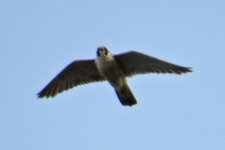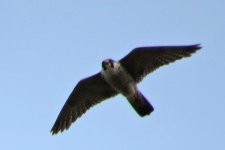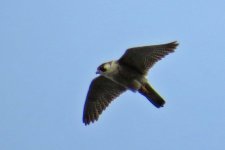Hi there,
could this be Falco peregrinus (maybe) ssp. pelegrinoides?
Seen in Spain, Canarian Islands, Teneriffe, North-East of the Island, Coastline, Anaga near Roque Bermejo, 27. Mai 2021
Thanks a lot and best regards,
Christoph
could this be Falco peregrinus (maybe) ssp. pelegrinoides?
Seen in Spain, Canarian Islands, Teneriffe, North-East of the Island, Coastline, Anaga near Roque Bermejo, 27. Mai 2021
Thanks a lot and best regards,
Christoph









